⌘F is a conversation series focused on the presentation of time-and web-based artwork. These interviews start with a set of fixed questions that trace the effects of worldwide quarantine on artistic practice and later expand upon a single work in detail.
This week’s ⌘F invites conversation with Addie Wagenknecht. Wagenknecht is an American artist based in Austria whose work explores the tension between expression and technology. Blending conceptually-driven painting, sculpture, and installation with the ethos of hacker culture, Wagenknecht constructs spaces between art object and lived experience. Here, the darker side of systems that constitute lived reality emerge, revealing alternative yet parallel realities. In the context of post-Snowden information culture, Wagenknecht’s work contemplates power, networked consciousness, and the incessant beauty of everyday life despite the anxiety of being surveilled.
This interview was conducted via email back and forth throughout April and May. The work we are discussing is titled Believe Me, a 2017 commission from the Whitney’s portal for internet art, ARTPORT To access the work, please click here.
*
What effects has self-isolation had on your practice now that we are confined to our homes and have limited interaction with others?
I work alone, I actually have not and have never had any sort of team/assistants- unless you count dogs and those who represent my work at galleries. So there is very little impact in that regard. What has happened however is that the museum shows, triennials, commissions, solo exhibitions and other events like lectures or symposiums for the next year were all canceled in a period of 5 days. I went from having a completely booked out schedule to everything being canceled or postponed. My last commissions for the Museum of the Moving Image (MoMi) opened literally a few days before everything closed in NYC.
What are your goals for 2020? How have these shifted from last year, or from the beginning of this year?
Millions of us are trying to stay home while also attending to the needs of our families and communities and studios. I hope that the obscenity of pretending that work is the only thing that matters or exists becomes a big question mark.
Right now, I am thinking about a million different things: Are my parents going to be ok? Do I need to beg that person who offered me that big corporate job in January to please take me? Did I order enough dog food? Do I have enough food? How am I going to make rent in May? What will things look like two weeks from now? A year from now? I have been trying to reach out to offer support to the soon-to-be overworked, contributing to local funds to organizations working with homeless and others who already had almost nothing and now are really without everything. I am offering to make shopping runs for older/at-risk neighbors. This is the work that demands our attention now much more than a chronic refreshing and checking news for ‘confirmed cases’ as if we are waiting for an Uber to arrive. If we want to survive, we have to stop making everything about ‘me’ and start thinking about the larger impact around us.
What are you working on currently?
The images below are of the pcomp/coding room as well as the painting space all ‘as is’ and everything is how it looked when I went in.
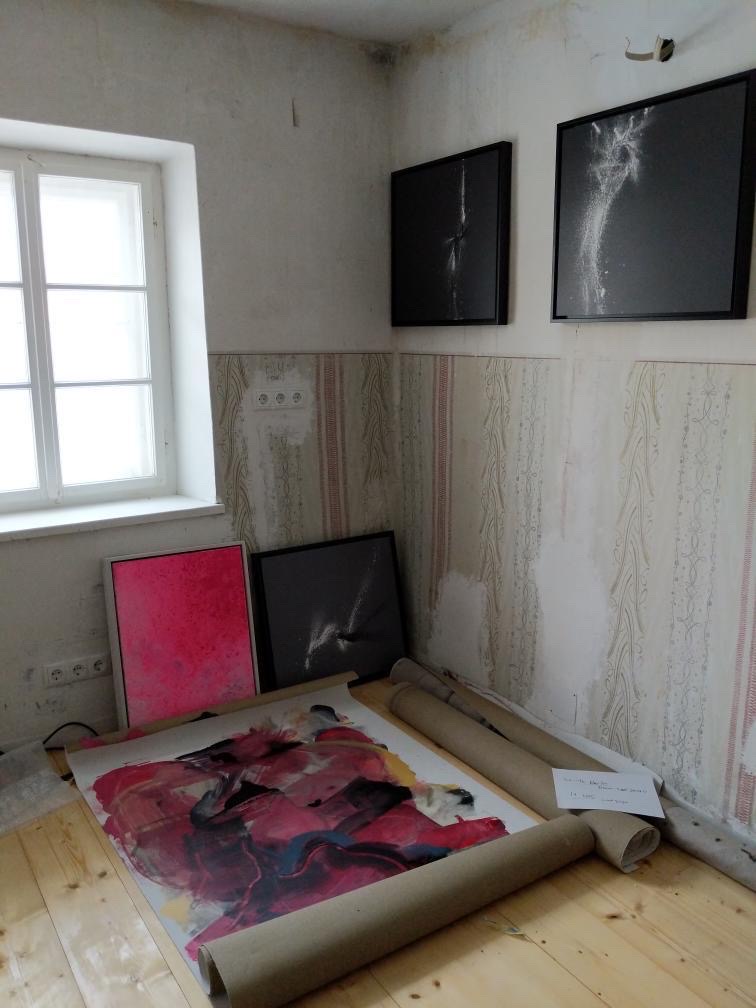
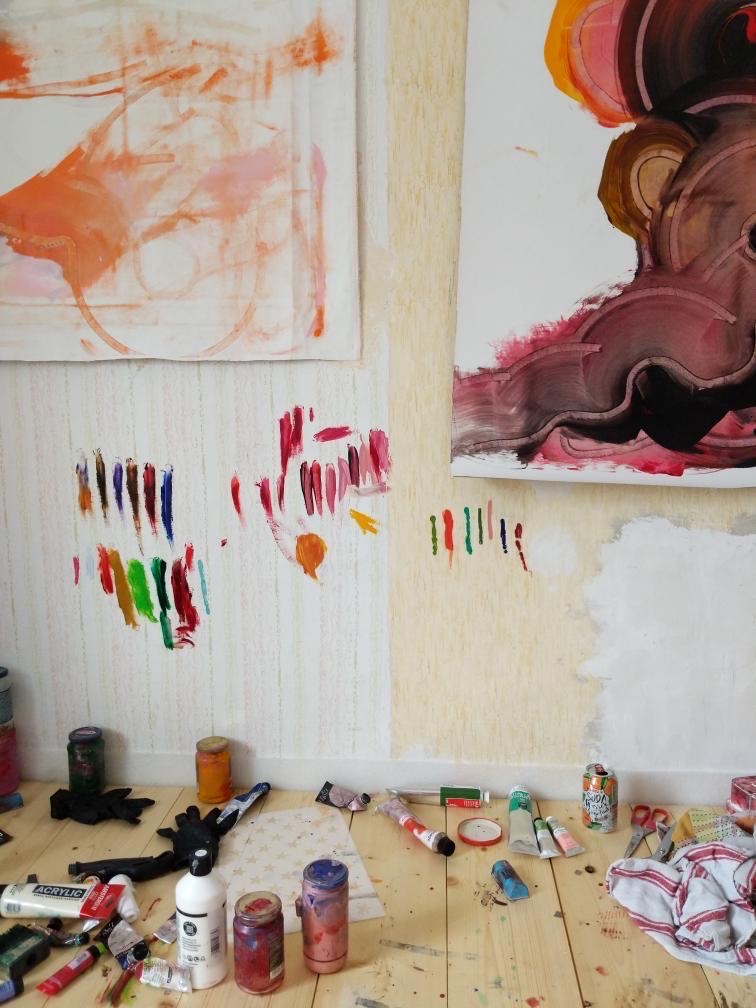
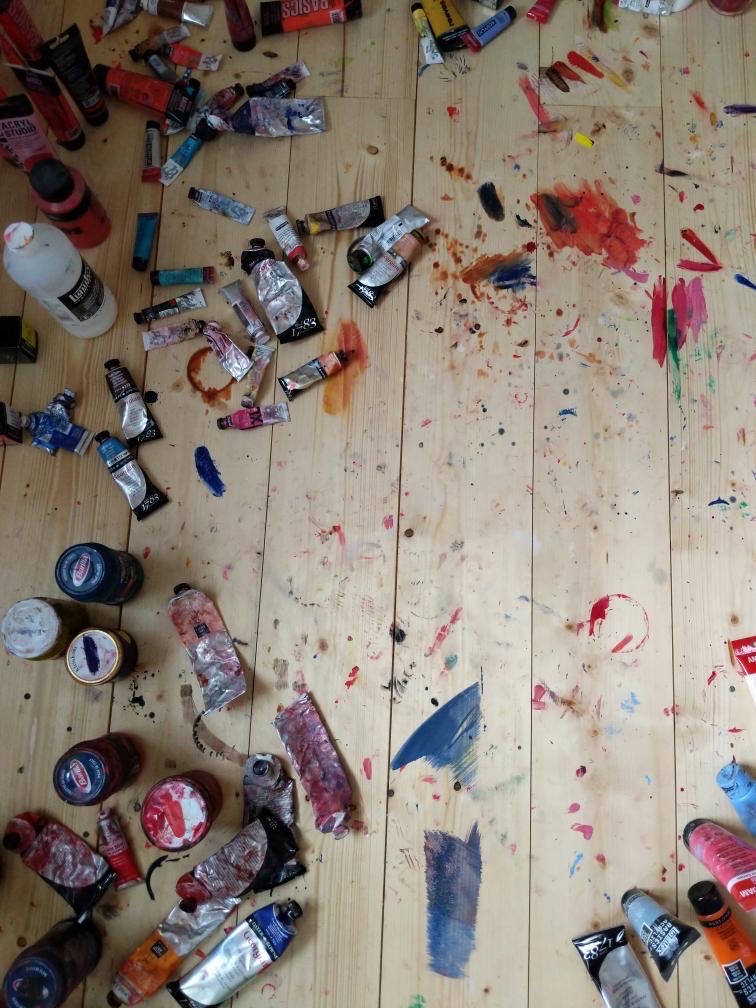
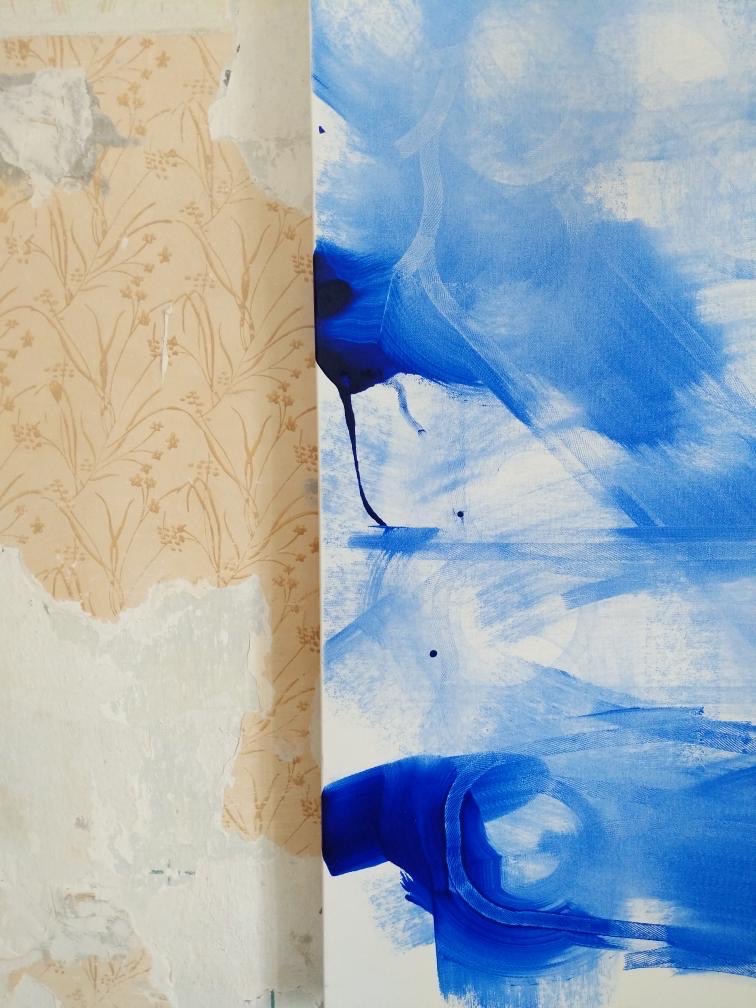

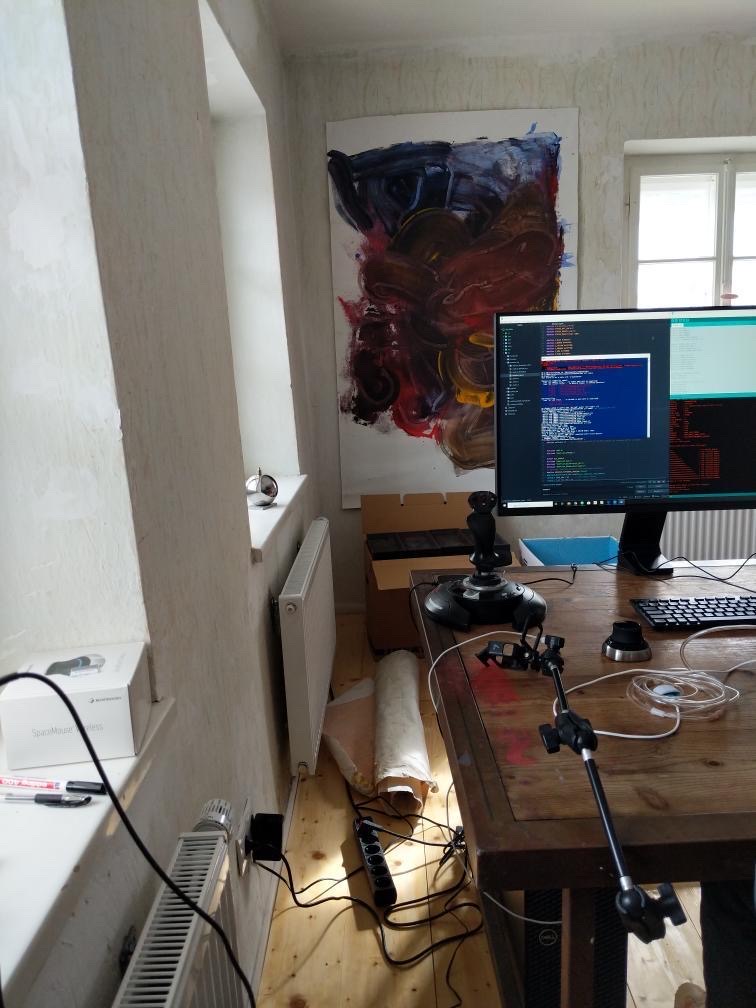
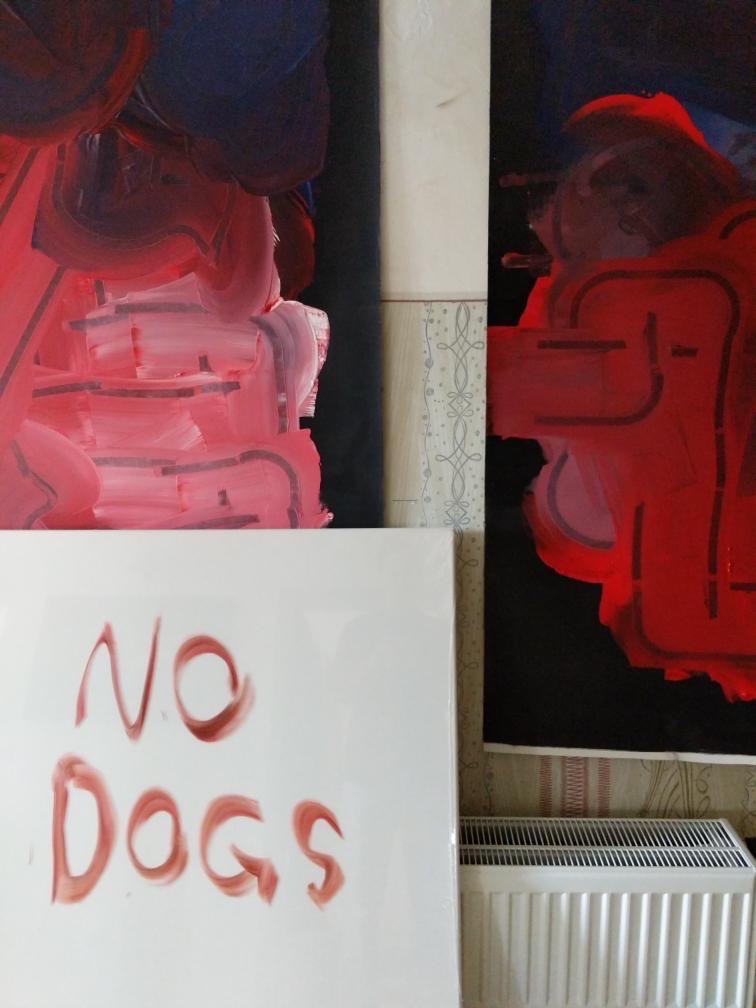

As for the current work/practice shifting or connections to what is going on…the works stapled on the walls are mostly all paintings. I started using cosmetic pigments/CBD/drugs/alcohol/coffee etc as mediums a few years after doing the still alive series with Aiala—I wanted to renegotiate contemporary portraiture using atypical means—and specifically make pieces of friends/myself/women/peers/queers who are in my social networks and peer groups. How do we show someone without directly painting them in a literal way?—by their vices and Rx and late-night binges or cravings…”the medium is the message.”
But then COVID hit Europe in February and somehow these works started to make sense or rather complicate all of this. It became how clear that our peers/social networks are often tied explicitly to our economic survival– instead of 401ks, health insurance or paid/sick leave—we depend on the internet to fund and support us if we lose our jobs, get in an accident, want to start a project. Very few of my peers have the luxury of healthcare from an employer, instead, most are artists and freelancers. We have a huge selection of privatized bottomless placebo bottled as hope: these $185 face oils, (one of my favs) Moon Juice (beauty, sex, brain dust) which seems to be a mix of misc things—none of which are proven to do anything but sell for $50 a jar. Healing crystals and other capitalist kumbaya solutions that often feel a lot like the equivalent of Thoughts and Prayers—so these works have started to shift their meaning from paintings of individuals to how we cope and survive as a generation who has grown up constantly without a plan b. The flags painted by Roombas you can see on the floor in some shots are still very much in a study phase, I wanted to play with replication and reproduction.. what it means to automate things, etc.
As for thoughts of being in studio, it’s been hard to focus. I lost my grandmother right as the COVID started to show up in NYC, she was like my mom.. and then as a result of the state of emergencies, my trip and all my lectures and conferences there were canceled… and it paralleled her death– so in a way, it’s felt like when she died, a lot of the world went with her. At the same time, this experience of COVID is a reminder for much of the West about how the majority of the world has lived and continue to live, for many of my friends who grew up in Iran or Lebanon or Mozambique– curfews and sanctions about who gets what or why have been part of their everyday lives… so it has allowed me to see how incredibly privileged so much of our lives and freedoms are.
Are there online resources that have been particularly useful for you during this time?
No, not really. I have been attending a few zoom raves– like @discwomannyc and @clubquarantine as a way to just decompress from all the deaths and illness in my immediate circles…they are usually in the middle of the night, but as I haven’t been sleeping much, it’s a nice break from reality.
The work we’re discussing this week is a web-based piece you made in 2017 as a commission for The Whitney’s ARTPORT, titled Believe Me. Upon opening the site you are presented with a banded, glitchy screen that flickers from time to time–turning your computer screen into part aging TV screen, part shattered iPhone. The work includes an interactive component with an on-click response that shifts the fractured image behind the screen. Refreshing is encouraged, as it provides the user with new visuals. To start off, can you explain the imagery you have selected? What is the user navigating through?
This work was very much a response to the 2016 elections and the realization that there are no utopias, maybe there never were, especially for people who didn’t grow up white, middle class in stable families in America–‘Welcome to the world’ in some sense. As an American abroad for much of the last 10 years, I was thinking a lot about the inaugural exhibition, America is Hard to See from the Whitney’s opening in the meatpacking (pulled, I’m assuming, from a political documentary by Emile de Antonio) and how often I am referring to those works and these investigation of the less familiar sides of American culture- the gilded gold apartment of the man who promised to drain the swamp, as if he was not the swamp himself, pills, rainbows, epithelial references and coping devices.
This work is first presented as still, yet overtime glitches into moving image. Do you encourage the viewer to spend time with these works as a type of meditative wallpaper, or does the more time spent lead to an increasingly dystopic vision?
It can be either actually–like a cracked screen, we often view the world via and by it for months or years before we ever bother to try to fix it.
Different scenes in this piece are greatly affected by a shattered and skewed appearance, for example, the American flag. You titled this piece, Believe Me, after the two most often used words by Donald Trump. How do you feel about this work now, given the current state of America?
I have been looking at ways and modes of reconstructing the US flag for the last 4-5 years. More recently, I have started to use IoT and AI objects to paint flags—of course they turn out messy, some more ‘readable’ than others, but that is exactly the point. So many people worry about what AI/IoT etc will do to us and too few people worry what power and people in power will do with AI and technology. We see this now in China, and it is soon likely in places in the US. People carry tracking apps to show a sort of mesh network of contacts of those ‘infected’ or ‘healthy’ as if those 2 things exist in a binary.
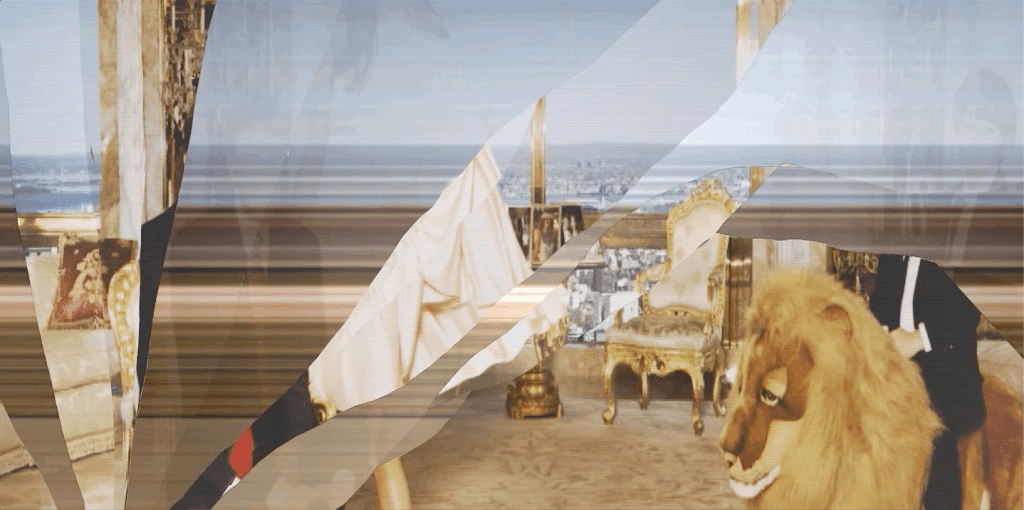
Addie Wagenknecht, Believe Me, 2017
The unification of these two camps, national identity and artificial intelligence, strikes a chord as we see cities beginning to reopen. America has gone rogue, with each state choosing their own reopening procedures, while other countries’ practice of tracking citizens existed long before coronavirus. Would you allow yourself to be tracked? Do you think tracking will ever be implemented in America?
We already do consent to being tracked–the difference is we buy the devices electively (see every smartphone ever) and carry them around, and go to bed with them. That data goes to companies first then to governments–any app with location (facebook, instagram, twitter, google maps, etc) can tell within a few meter range where we are at all times. So I would argue we already are being tracked, the difference is that most people don’t acknowledge that this is something they literally buy into. The source of the issue from my point of view is that we have traded rights for privileges and convenience. We’re willing to strip everyone, including ourselves, of universal rights because we have been conditioned to believe that what applies to everyone else doesn’t apply to us.
*
For more information about Addie Wagenknecht’s work, please click here.

